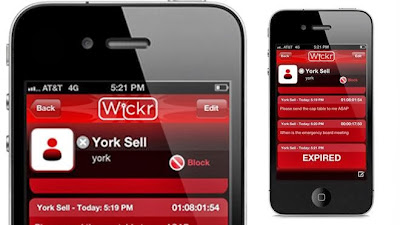Back in the day, security barely pierced the consciousness of operators in the enterprise. The only exceptions were the nervous workers in the information technology department, and even they considered security to be secondary to the concerns of keeping the network up and running. However, in the twenty-first century, network security is job one, and not just for the IT department.
Protecting networks against unauthorized access and malicious attacks requires the attention of highly-trained and diligent experts. In order to meet the challenge, specialty training programs have been developed. One of the most well-regarded specialty training programs is Cisco Certified Network Associate (CCNA) Security certification. CCNA Security certification trains IT professionals about different types of security threats, and how to develop effective security protocols. At later stages of the certification training process, candidates learn more about how to work with and service specific Cisco hardware and security management tools.
CCNA Security Certification
In actuality, CCNA Security certification encompasses several levels and different specialties. The various certification levels range from basic CCNA Security certification for relatively new IT workers to Cisco Certified Internetwork Expert (CCIE) certification for seasoned professionals with more than seven years of experience. CCIE certification is widely accepted as one of the most prestigious IT certifications to hold. However, all levels of Cisco certification require would-be certified technicians to obtain a deep understanding of network security in general and Cisco security in particular.
The CCNA Security Certification Exam
Any valid Cisco CCENT, CCNA Routing and Switching, or any CCIE certification can serve as your prerequisite for the CCNA Security exam. In addition, the updated ICND1, ICND2, and CCNA Composite exams can be applied towards the achievement of several Cisco associate-level certifications. For more information, or to check for the latest updates from Cisco, go to the Associate-level Exam Logic Tool.
The next step for qualifying for the CCNA Security exam is to take the IINS class, and then pass exam 640-554. Candidates are required to demonstrate a command of knowledge concerning various network threats and how to counteract those threats. The various areas covered by the CCNA Security certification exam includes the following subject areas:
- A general knowledge about different types of network threats
- Ability to craft effective security policies
- Implementation of virtual private networks tunnels for Cisco equipment
- Effective mitigation of Layer 2 and Layer 3 network attacks
- Understanding of the implementation of Cisco-specific technologies, such as the Cisco IOS firewall feature set and the Cisco IOS Intrusion Prevention system (IPS) feature set
- Implementing security protocols such as AAA and ACL
- Knowledge on how to install, configure Cisco security equipment such as the Cisco Adaptive Security Appliance (ASA)
As the previous list indicates, a casual acquaintance with concepts such as "router," "binary code" and "router" are far from adequate to prepare candidates to successfully pass the CCNA Security certification examination. Candidates typically devote months to preparing for the examination. Among the steps taken by candidates to prepare for the CCNA Security certification examination, including hours of rigorous self-study and taking practice examinations, completing formal training is extremely effective.
There are two options to obtain CCNA Security certification. The first option is to complete the CCNA Composite Examination. The second option is to pass two separate tests: Interconnecting Cisco Network Devices 1 and Interconnecting Cisco Network Devices 2. After completing either of the two options, candidates can proceed to take the Implementing Cisco IOS Network Security (IINS) examination. Those who do not need the CCNA, but just the CCNA Security certification can opt to simply take the ICND1, and then complete the CCNA security exam.
After You Obtain CCNA Security Certification
Once you successfully pass the examinations to achieve CCNA Security certification, you will retain your certification for three years. To renew your certification, you must either pass the CCNA Security certification examination again or attempt to achieve another Cisco certification. One popular option for additional Cisco certifications is the Cisco Certified Networking Professional Security (CCNP) certification. A valid CCENT Certification acts as the minimum pre-requisite requirement for CCNA Security. Candidates who have a valid CCENT Certification and who also pass the 640-554 IINS exam, can become certified in CCNA Security. Check the CCNA Security Syllabus page for the latest information.
Candidates for the CCNP Security certification typically have more experience than CCNA Security certificate holders. CCNA Security certificate holders are often at the beginning of their IT careers, and hold titles such as Network Security Specialist, Security Administrator or Network Security Support Engineer. By contrast, CCNP certificate candidates typically have at least three to five years of IT experience, and hold a title like Network Security Engineer or its equivalent.
Candidates for CCNP Security certification must demonstrate a command of various Cisco technologies, including Cisco IOS, Cisco routers and switches, ASA, Security Management, CSM, and Firewall for IPS management. In addition, to obtain CCNP Security certification, candidates must successfully pass four examinations, as opposed to the two or three examinations that candidates for CCNA certification must pass. CCNP certification is also valid for three years. If you obtain CCNP certification while your CCNA certification is still valid, your CCNA certification will be extended as well.
Travis Adams is an IT veteran. He often writes about his experiences and insights into industry success.




















